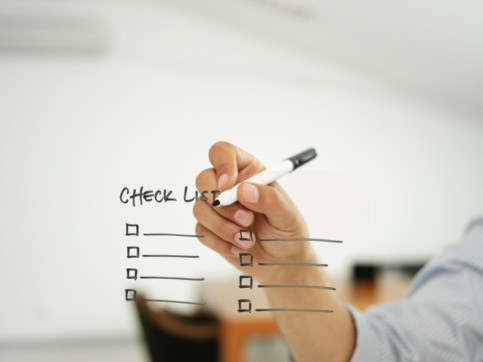10 Things to Look for When Evaluating a Grant Proposal

The application process is an organization’s first real look at how you work with grantees. It’s also your chance as a foundation to see if this organization is a good fit for your program. A 10-page application doesn’t make sense—for the applicant or the reviewer—but you need enough information to know if you are making a good decision. There is a lot riding on this delicate dance, but with the right due diligence, you can feel confident in your selection.
Ensuring that your foundation makes impactful grants to the right nonprofit partners starts with a thorough proposal evaluation. You’ve done the hard work of making sure you’re asking for only the information you need to make a sound decision, but that can still be a lot to review.
To help you better review submissions so that you are set up for success, here are 10 items you should look for as you evaluate your grant applications.
1. Organization Background and Experience
Has this organization run similar programs in the past, with similar budgets, focus area, and geography? Does their previous experience set them up for success with this new program?
2. Financial Health of the Nonprofit Organization
Make sure you look at the nonprofit’s financial records and ensure that there are no red flags that could indicate this may be an unwise investment. Due diligence best practices include reviewing the organization’s 990 and audited financial statements, among other documentation.
3. Program Partners
If the nonprofit will be collaborating with other partners, such as another nonprofit, an academic institution, a government entity, or even other grantmakers, are these partners experienced in this type of program? Are they subject matter experts or invested in the target community? What specific roles will the partners play, and how will their activities be tracked? If there aren’t other partners, are you comfortable that the individual organization can fully implement the program on its own?
4. Program Description
This should be more than a few sentences of high-level goals. The proposal should include a detailed description of how the program will be executed, how exactly the pieces fit together to achieve the desired outcome, and the different phases involved in implementing and running the program.
5. Program Timeline
Even the best laid plans are subject to change, but the proposal should include a general timeline of when the various parts of the program will be executed and how the program will ultimately come together. This timeline should serve to help you, as the grantmaker, to monitor the progress of the grant and ensure it’s on track to hit various milestones.
6. Measurement Plan
Has an appropriate plan been laid out to monitor and measure the program outcomes? If appropriate for the grant size, is an experienced independent evaluator involved to administer the outcomes measurement plan? Or if the measurement plan is being implemented internally, do the staff tasked with tracking results have the appropriate knowledge and experience to accurately do so?
7. Sustainability Plan
Has the organization specified a plan to obtain continued funding and/or an ability to self-sustain the program after the grant period has ended? In other words, is the nonprofit already thinking about what happens after this grant?
8. Communications Plan
Does the proposal outline an appropriate communications plan as part of the overall program, to promote awareness and gain buy-in from the target population? And separately, does the proposal outline how the organization will publicize the program, such as sharing what they learned at conferences and in publications? This might also be a place where you as a foundation can provide suggestions, by having the program manager write a blog post for your website or introduce them to connections you have at publications or conferences.
9. Detailed Budget
Does the proposal include a detailed line-item budget? Does the line-item budget include reasonable costs (meaning neither inflated nor underestimated) for personnel and program-related expenses? A detailed budget enables you to be a good steward of your foundation’s grant funds.
10. Alignment to Key Initiatives
If you have focus areas or initiatives that are core to your grantmaking organization, such as Diversity, Equity, Inclusion, and Justice, how well does the proposal showcase the potential grantee’s work in that area? Do they meet the requirements for diversity, for example, or have internal controls in place to make sure they reach the marginalized community they want to serve?
Creating a Successful Grant Proposal Evaluation Process
In my experience as a former corporate grantmaker, if an application includes satisfactory responses to these grant proposal evaluation criteria, that’s a good indicator that the organization has carefully thought the project through and will be a great grantee partner.
Don’t be afraid to ask questions and have a two-way conversation about the application responses—some of my most successful grants resulted from working together to refine the proposal by sharing our experiences based on past learnings. And make sure that you have the right technology in place that allows you to easily ask for and collect this information in applications. A clear, easy-to-use application form will help set you and your partners up for success from the very beginning.
This post was originally posted in March 2017 and updated in November 2022.
 Free Resource
Free Resource
Make the Most of Your GMS
8 Ways Your Grant Management System Helps Build Strong Relationships




